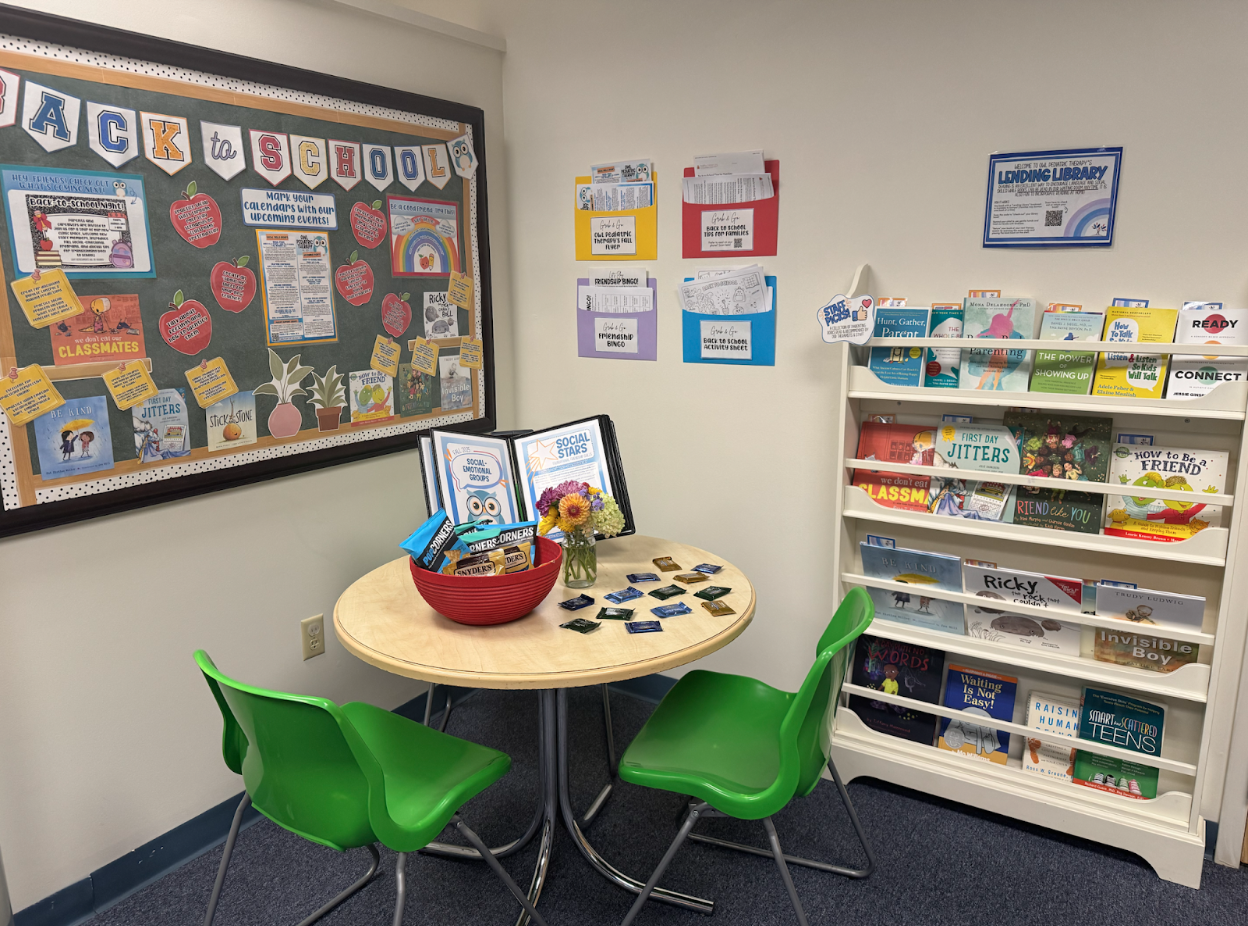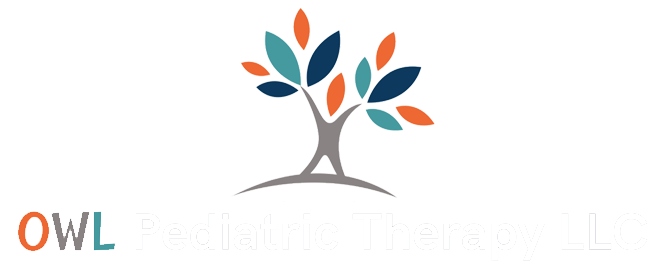Hi OWL Families!
The start of a new school year brings so many new changes and transitions– new classrooms, new routines, and often new friends, too! While this is exciting for many children and families, it is important to recognize that it can also feel a little overwhelming or even anxiety-producing for some of our children (and even their caregivers!) Often, friendships play a big role in how kids and teens feel connected and supported in the school setting, which is why our September Community Board is centered around transitioning back to school and friendship skills.
Our new Community Board, located just behind the table and chairs in our waiting area, is full of great resources for kids and their caregivers! This month, we’ve shared several back-to-school tips that are particularly helpful for children and teens who may be having a challenging time transitioning back to school.
- Establish bedtime routines early. The transition back to school is the perfect time to introduce (or re-introduce!) bedtime routines. When so many things feel new or different at school, having more structure and consistency at home helps kids decompress and feel secure. Setting a bedtime that allows enough rest is key! (3-5 years old: 10-13 hours per night, 6-13 years old: 9-11 hours per night, 14-17 years old: 8-10 hours per night) Simple, predictable routines—especially when paired with visuals—make a big difference in helping children wind down and get the rest they need.
- Practice packing backpacks and lunchboxes together to build independence. Involving children in daily routines like packing together gives kids a sense of responsibility, helps them feel prepared for the day, and reduces morning stress. Start small—like choosing a snack or placing a folder in their backpack—and build up as they gain confidence. Consistent practice builds important life skills while strengthening confidence and self-reliance.(Checklists are a great visual reminder and are especially helpful for children who struggle with executive functioning!)
- Create a calm morning plan. Set a positive tone for the day! When children know what to expect in the morning, it reduces stress, supports regulation, and makes the transition to school smoother. Start with small, predictable steps—like brushing teeth, getting dressed (pro tip: create completed outfits in your child’s closet for them to choose from!), and choosing breakfast—and keep the routine consistent. A calm start helps kids feel secure, prepared, and ready to learn. (Visual schedules or timers can be great tools for keeping mornings on track without extra pressure!)
- Practice talking about feelings and how to identify them. This helps children build emotional awareness as they transition back to school. Starting a new school year can bring up big emotions—excitement, worry, or frustration—and giving kids the words to describe their feelings helps them feel understood and supported. Begin with simple emotions like happy, sad, or nervous, and practice ways they can talk about these emotions with trusted adults. (Ask your clinician if you need help creating “sentence starters” for your child!)
- Utilize role play scenarios and “classroom” pretend play to practice social skills and expected classroom behaviors. Acting out situations—like what to do if someone takes your turn, how to ask to join a game, or how to handle feeling left out—gives kids a safe way to practice responses and build confidence. This playful practice strengthens problem-solving skills, helps kids feel more prepared for real-life challenges, and supports smoother interactions with peers and teachers. (Try switching roles so your child can practice seeing situations from another perspective!)
- Create an “All About Me” sheet for your child’s new teacher(s). As much as we hope the teacher will read all of their evaluations, IEP/504, and/or other information within the first few days of school, many teachers do not receive these documents until right before school begins and often have many student files to read through. It is helpful to provide basic, need-to-know information for them to reference until they are able to get to know your child and their needs. (We’ve created a simple Canva template for you to use!)
Need some help with creating visuals? We’ve developed several templates that our families are free to use!
-
- Morning/Bedtime Routines: OWL, Morning/Bedtime Routines Template
-
- What’s In My Backpack? Checklist: OWL What’s In My Backpack? Template
-
- All About Me!: OWL, All About Me Template
In addition to these tips and tricks, we’ve highlighted some basic tips for being a good friend, as well as several picture books you can read with your child to discuss important friendship skills (Bonus! All of these titles are available to borrow from our new Lending Library!) Near each book cover, you’ll also find a “sticky note” with tips for caregivers. The books highlighted this month include:
-
- We Don’t Eat Our Classmates by Ryan T. Higgins
-
- Be Kind by Pat Zeitlow Miller
-
- Stick and Stone by Beth Ferry
-
- First Day Jitters by Julie Danneberg
-
- How to Be a Friend by Laurie Krasny Brown & Marc Brown
-
- A Friend Like You by Frank Murphy
-
- The Invisible Boy by Trudy Ludwig
-
- Ricky, the Rock That Couldn’t Roll by Mr. Jay
Be sure to check out the “Grab & Go” section for our Fall Flyer and an article from HealthyChildren.org that is full of excellent tips for the “back-to-school season” from The American Academy of Pediatrics. There’s some fun activities for kids and teens, as well– Encourage them to grab a Friendship BINGO sheet to practice initiating conversation, introducing themselves, and asking questions to get to know their peers. There is also a fun Back-to-School Activity Sheet to pass some time in the waiting area!
At OWL, we know that children thrive when their whole selves are supported—not only their speech and motor skills, but also their confidence, friendships, and emotional well-being. That’s why, as our clinic has expanded, so has our focus on social-emotional growth. Our hope is that you’ll feel a sense of community and connection in our new waiting area—knowing that this is a place where children and families are seen, supported, and celebrated.



